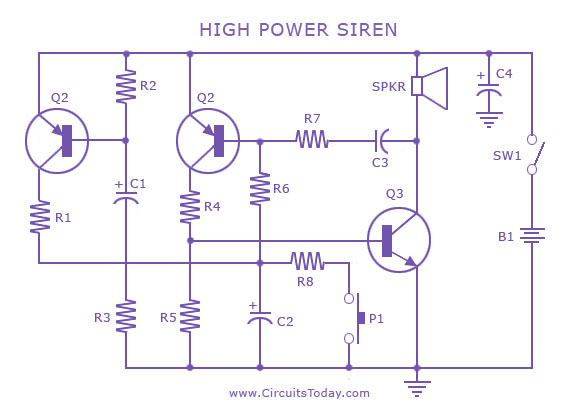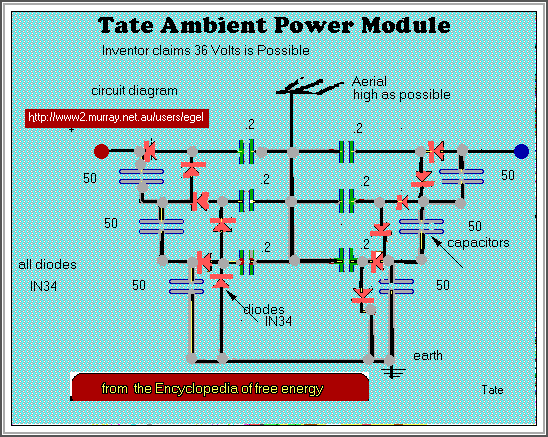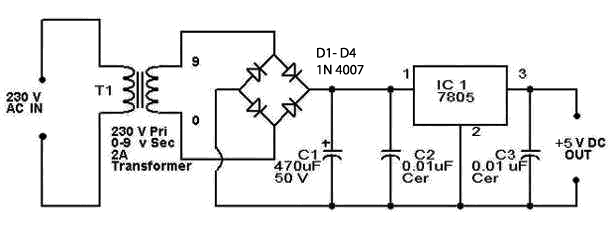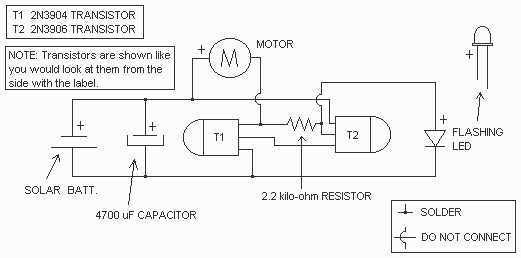
Dual Regulated Power Supply
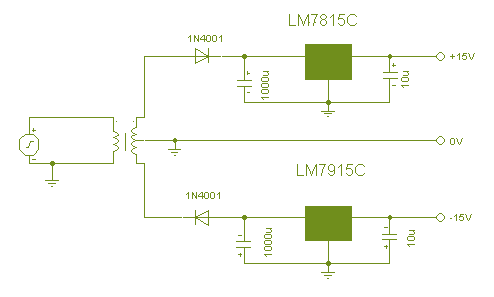
In this circuit, the 7815 regulates the positive supply, and the 7915 regulates the negative supply. The transformer should have a primary rating of 240/220 volts for Europe, or 120 volts for North America. The centre tapped secondary coil should be rated about 18 volts at 1 amp or higher, allowing for losses in the regulator. An application for this type of circuit would be for a small regulated bench power supply.
This circuit employs a dual power supply configuration utilizing the 7815 and 7915 voltage regulators to provide stable +15V and -15V outputs, respectively. The 7815 is a linear voltage regulator that outputs a fixed +15V, while the 7915 provides a fixed -15V output. Both regulators require a heat sink to dissipate excess heat generated during operation, especially under load conditions.
The transformer plays a crucial role in this circuit. It must have a primary winding rated for either 240V or 220V for European applications or 120V for North American use. The center-tapped secondary winding is essential for providing the dual voltage outputs. A typical specification for the secondary coil is approximately 18V at a minimum of 1A current rating. This rating ensures that, after accounting for voltage drops across the regulators and other losses, the output voltage remains stable under varying load conditions.
The circuit design should include appropriate filtering capacitors on the output of each regulator to smooth out any ripple voltage, ensuring a clean DC output. Typically, a large electrolytic capacitor (e.g., 1000µF) is placed at the output of each regulator to filter high-frequency noise, while smaller ceramic capacitors (e.g., 0.1µF) may be added for further high-frequency noise suppression.
The application of this circuit is ideal for a small regulated bench power supply, which can be used for powering various electronic projects and prototypes that require a stable dual power supply. Proper attention to layout and grounding will enhance the performance and reliability of the circuit, minimizing noise and ensuring stable operation.In this circuit, the 7815 regulatates the positive supply, and the 7915 regulates the negative supply. The transformer should have a primary rating of 240/220 volts for europe, or 120 volts for North America.
The centre tapped secondary coil should be rated about 18 volts at 1 amp or higher, allowing for losses in the regulator. An application for this type of circuit would be for a small regulated bench power supply. 🔗 External reference
This circuit employs a dual power supply configuration utilizing the 7815 and 7915 voltage regulators to provide stable +15V and -15V outputs, respectively. The 7815 is a linear voltage regulator that outputs a fixed +15V, while the 7915 provides a fixed -15V output. Both regulators require a heat sink to dissipate excess heat generated during operation, especially under load conditions.
The transformer plays a crucial role in this circuit. It must have a primary winding rated for either 240V or 220V for European applications or 120V for North American use. The center-tapped secondary winding is essential for providing the dual voltage outputs. A typical specification for the secondary coil is approximately 18V at a minimum of 1A current rating. This rating ensures that, after accounting for voltage drops across the regulators and other losses, the output voltage remains stable under varying load conditions.
The circuit design should include appropriate filtering capacitors on the output of each regulator to smooth out any ripple voltage, ensuring a clean DC output. Typically, a large electrolytic capacitor (e.g., 1000µF) is placed at the output of each regulator to filter high-frequency noise, while smaller ceramic capacitors (e.g., 0.1µF) may be added for further high-frequency noise suppression.
The application of this circuit is ideal for a small regulated bench power supply, which can be used for powering various electronic projects and prototypes that require a stable dual power supply. Proper attention to layout and grounding will enhance the performance and reliability of the circuit, minimizing noise and ensuring stable operation.In this circuit, the 7815 regulatates the positive supply, and the 7915 regulates the negative supply. The transformer should have a primary rating of 240/220 volts for europe, or 120 volts for North America.
The centre tapped secondary coil should be rated about 18 volts at 1 amp or higher, allowing for losses in the regulator. An application for this type of circuit would be for a small regulated bench power supply. 🔗 External reference


